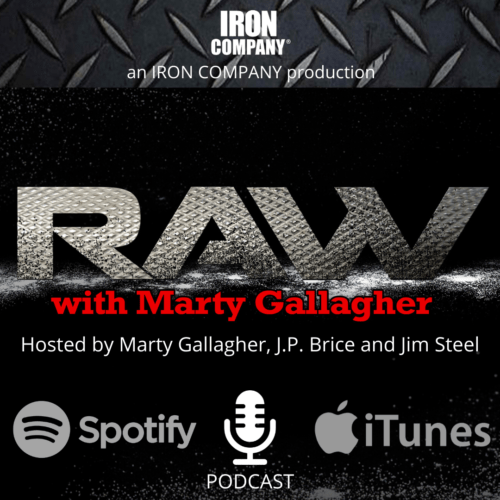
Big Guns - Bicep and Tricep Training For Novice Lifters
Big Guns - Advice to novice arm trainers
Suddenly, I find myself working with three teenage boys, ages 13 thru 16. Like puppy Labrador retrievers, they are beside themselves with their gains in muscle and strength. They find the process magical and the lifting itself fun and challenging. After working with each for a while, they are no longer scared or intimidated by me, as they were initially. Interestingly, and not surprisingly, each has individually expressed an interest in arm training. “I wanna do extra work to grow BIG GUNS!” as the 13-year-old eloquently put it, this after he had been inspired by seeing Arnold in the movie Predator.
I have fed them a steady diet of squats, bench presses, overhead presses, and deadlifts, the Core Four, and now they are hungry for more. I am all for it. “The four lifts are the meat and potatoes.” I drill into their heads. “If after eating your meat and potatoes, you want desert (arm training) then by all means, have at it!” The 16-year-old asked, “How about a second arm day coach? All we do is pump them up.” And he was right. We take the Core Four deadly serious and periodize each lift. While each of the four lifts (or their variants) are trained once each week, biceps and triceps can be trained more often. Arm work involves doing a series of isolation exercises; the Core Four are compound multi-joint exercises.
Arm work is safe: the poundage lighter, the muscles smaller. Arm training uses higher reps and adds ‘intensity enhancers,’ i.e., forced reps, drop sets, super-sets, giants sets, etc., Arm training uses a wide variety of exercises that can and should be rotated. Here is a classical two-day-a-week beginner arm training program perfect for my young trainees to sink their teeth into…
Day 1 (bicep and tricep exercises are super-setted, i.e., alternated)
Standing barbell cheat curls: Arnold’s favorite arm exercise. A slight jolt is used to get the bar moving and a slight lean-back is used at the finish of the final reps of the top set. Arnold allowed his wrists to bend backwards as he curled. Try it, it makes curling harder. Top set: six strict reps with two cheat curls to end the set.
Dips and weighted dips: dips are “squats for the arms.” Dip down until the upper arms are parallel to the floor. Push upward as explosively as possible to an exaggerated “hard” lockout. All dip benefits reside in the lockout. When you can do 3 sets of 10, start strapping on weight like barbell plates. Weighted dips create gigantic triceps. *
Seated incline dumbbell curl: to make strict dumbbell curling even stricter, do them while lying back on an inclined weight bench. Most incline curls are done at a 45-degree angle, we recommend an even steeper 22-degree (lower) incline. Keep the elbows back – don’t let them ‘rise up and forward’ thru the sticking point.
Single dumbbell overhead tricep extension: a fabulous exercise if done correctly. Position both hands around the handle under one end of the bell, clean it to one shoulder, get it overhead. Lower the lone dumbbell behind the head. Relax the arms and shoulders and let the dumbbell stretch the triceps. Push to a hard lockout.
*If lacking a dip apparatus, substitute lying Nose-breakers; lower a barbell to the forehead in a semicircle
Day 2 (three days later) Advice to novice arm trainers
Standing alternate dumbbell curls: alternating dumbbell curls allow for maximum poundage with some purposeful looseness. Each arm gets worked in turn. Towards the end of the set, some looseness in technique is recommended to squeeze out 1 or 2 more reps. Ridiculous looseness destroys any bicep benefits.
Narrow-grip bench press: use a slightly narrower than shoulder-width grip. Too narrow a grip strains the wrists. Lower, and push the bar as you would a touch-and-go bench press. Exaggerate the lockout, as that is where the triceps are maximally stimulated. Try some forced reps (1 or 2) with a training partner.
Strict barbell or dumbbell curl leaning against a post or wall: to create the ultimate in bicep isolation, perform light curls leaning against a pole, post, or doorframe. Keep your glutes, back, and head in contact with the pole throughout the set. Want to squeeze out two more reps? Allow the head to come off the pole.
Cable pushdowns: this is a nice finishing exercise. Make use of the various cable attachments to stress the different heads of the tricep; straight and angled create differing muscular effects; the tricep rope attachment is only effective if the poundage is light, and the lockout exaggerated. High rep sets pump tris to the bursting point. *
*If lacking a cable pushdown device, substitute bench dips, or incline bench dumbbell tricep extensions
The procedure is to work up to a top set in each exercise, ending in the 6-12 rep range. Poundage is unimportant; arm work is about feeling the biceps and triceps contract in real time. Each rep is raised and lowered in continuous tension style; no technical slop allowed. Some looseness is used in the barbell cheat curls and standing dumbbell curls, but this is controlled looseness, just enough layback to complete one or two more growth-producing reps.
Arms are worked using precision techniques, moderate to high reps, moderate poundage, and continuous tension. Bicep exercises and tricep exercises are alternated. Rest until breathing normalizes. The arms should be pumped after a session. I leave you with the words of Arm God Bill Pearl, “It’s not which curl you choose, it's how you do the curl you choose.”
Ten Curl Types
- Cheat curl: more aptly named, ‘barely’ cheat curls. Use the bare minimum heave and backbend to keep the set going. Don’t start cheating on rep one: hit positive failure curling strictly, then begin cheating!
- Concentration curl: the opposite of a cheat curl. Usually done seated, often braced against one leg, the idea is to isolate the bicep by “back-bracing” the curl, ensuring more strictness and isolation.
- Incline dumbbell curl: classically done using a 45-degree angle, lying back on a weight bench while curling dumbbells enforces strictness creating greater bicep isolation. Keep the elbows back throughout!
- Preacher bench curl: originally called the (Larry) Scott curl, inventor Vince Gironda advised, “lean back at the bottom of the rep; lean forward at the top of the rep.” This tip amplifies results.
- Spider curl: while the preacher curl has most resistance and tension at the bottom of the curl rep, the 90-degree back-braced spider curl stresses the topmost portion of the rep.
- Drag curls: this type of curl is simple to understand, hard to master. Once the standing barbell curl begins, the athlete keeps the bar in contact with the body, raising the bar to the pecs. Highly isolative.
- Cable curls: low angle cable curls are favored by IFBB pros to finish an arm session. Cables lend themselves to continuous tension and full range-of-motion. Curl from a low angle to the chin.
- Braced curls: before there were preacher curl benches, machine curl machines, cable devices and benches that inclined, men isolated their biceps by leaning against a post or pole when curling.
- Chin-ups: deprived of a barbell and seeking to work the biceps? Get good at various versions of under-grip chin-ups. Experiment with different grip widths to target inner or outer bicep head.
- Machine curls: machine curls rank lowest on the curl totem pole. Machine curls eliminate the need to control side-to-side motion. Free-weights excite muscle stabilizers, digging a deeper muscular inroad.
Triceps have a tremendous performance impact on both the bench press and overhead press. Training triceps in conjunction with bench pressing is a natural: elite athletes have traditionally placed triceps after bench pressing – train them together, rest them together. Curls are related to nothing. None of the Core Four lifts, or any Olympic lift, is improved by improving the biceps or getting better at curling.
On the other hand, while sitting around waiting to recover from a set of weighted dips or a forced rep set of close grip bench presses, why not do a set of curls?! While bench pressing and triceps go together like ham and eggs, triceps and biceps go together like shrimp and grits, or Mick and Keith. The logical place for one weekly arm routine is after benching. On the second arm day, place arms behind overhead pressing, or give arms their own separate training day.
The 16-year-old feels himself “growing into a Massive Man,” as he related while crashing through the 150-pound bodyweight barrier. (He was 130 when we started). He now has his gunsights set on growing big guns and I shall do everything in my power to assist him in his muscle quest.
About the Author
As an athlete Marty Gallagher is a national and world champion in Olympic lifting and powerlifting. He was a world champion team coach in 1991 and coached Black's Gym to five national team titles. He's also coached some of the strongest men on the planet including Kirk Karwoski when he completed his world record 1,003 lb. squat. Today he teaches the US Secret Service and Tier 1 Spec Ops on how to maximize their strength in minimal time. As a writer since 1978 he’s written for Powerlifting USA, Milo, Flex Magazine, Muscle & Fitness, Prime Fitness, Washington Post, Dragon Door and now IRON COMPANY. He’s also the author of multiple books including Purposeful Primitive, Strong Medicine, Ed Coan’s book “Coan, The Man, the Myth, the Method" and numerous others. Read the Marty Gallagher biography here.



